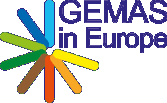|
Food production and quality depend on the properties of agricultural and grazing land soil. The fact that the natural variability of chemical elements in soil at the continental scale spans several orders of magnitude is widely neglected (see the soil geochemical maps of the Geochemical Atlas of Europe. REACH (Registration, Evaluation and Authorisation of Chemicals), the new European Chemicals Regulation adopted in December 2006, requires from industry a sound knowledge on the natural geochemical background variation. In agricultural sciences, the focus is on the major nutrients in soil, while trace elements, and especially contaminants (e.g., the heavy metals), are widely neglected. In environmental sciences today, much of the political attention is focussed on ‘too high’, toxic element concentrations in soil. For a number of elements, maximum admissible concentrations have been defined for agricultural soil or sewage sludge used as fertiliser. It is not realised, however, that even ‘too low’, deficient element concentrations, may commonly have a more severe influence on productivity, and plant, animal and human health. A sound documentation of element concentrations, and their variation in agricultural and grazing land soil at the continental scale, is needed before political actions are taken. Such data are also urgently needed at the continental scale in forensic chemistry. For example, regional differences can be used to trace the origin of food. The EuroGeoSurveys Geochemical Atlas has proved that the data can be collected at a low density, and thus at a reasonable cost.
The GEMAS project delivers good quality and comparable exposure data of metals on agricultural and grazing land soil; in addition, soil properties, known to influence the bioavailability and toxicity of metals (and other elements), were determined on soil at the European scale.
The sampling, at a density of 1 site/2500 sq. km, was completed at the beginning of 2009 by collecting 2211 samples of agricultural soil (Ap-horizon, 0-20 cm, regularly ploughed fields), and 2118 samples from land under permanent grass cover (grazing land soil, 0-10 cm), according to an agreed field protocol.
All GEMAS project samples were shipped to Slovakia for sample preparation, where they were air dried, sieved to <2 mm using a nylon screen, homogenised and split to subsamples for analysis. They were analysed for (1) 53 chemical elements following an aqua regia extraction, (2) pH in CaCl2, TOC, LOI, grain size (on a selection of samples), total C and S, (3) total concentrations of 39 elements by X-ray fluorescence, (4) Pb and Sr isotopes, (5) prediction of soil properties by mid infrared (MIR) measurements, and (6) determination of Kd values for selected elements on selected samples. The aqua regia results were received in September 2009 and were subjected to a rigorous quality control procedure before their acceptance, and the first quality control report is available for downloading. The XRF, pH, TOC, LOI, grain size, total C and S results were all received in March 2011 and were also subjected to the same rigorous quality control procedure, as the aqua regia results, before their acceptance, and the second quality control report is available for downloading.
Finally, the third quality control report evaluates the results of particle size estimation by MIR® prediction, Pb-isotope and MMI® extraction analyses, and includes the results of the GEMAS ring test for the soil standards Ap and Gr.
The GEMAS Geochemical Atlas was launched on the 5th of December 2013 in Rome at F.A.O. headquarters on the occasion of World Soil Day with a keynote presentation at the plenary session, followed by a workshop (Go to Downloads page and GEMAS LAUNCH AND WORKSHOP PRESENTATIONS).
The results of the GEMAS project were released in April 2014 as a set of two volumes, accompanied by a DVD with all the analytical data, maps, diagrams and tables:
Reimann, C., Birke, M., Demetriades, A., Filzmoser, P. & O’Connor, P. (Editors), 2014.Chemistry of Europe’s agricultural soils - Part A: Methodology and interpretation of the GEMAS data set. Geologisches Jahrbuch (Reihe B 102), Schweizerbarth, Hannover, 528 pp. + DVD
Reimann, C., Birke, M., Demetriades, A., Filzmoser, P. & O’Connor, P. (Editors), 2014.Chemistry of Europe’s agricultural soils - Part B: General background information and further analysis of the GEMAS data set. Geologisches Jahrbuch (Reihe B 103), Schweizerbarth, Hannover, 352 pp.
For more information about the project, the GEMAS Brochure is available for downloading.
GEMAS is a cooperation project between the EuroGeoSurveys Geochemistry Expert Group and Eurometaux.
CONDITIONS FOR CARRYING OUT RESEARCH ON THE GEMAS PROJECT SAMPLES
Any research organisation interested to analyse the GEMAS project samples, must sign a binding contract with the chairperson of the EuroGeoSurveys Geochemistry Expert Group, and must agree on the following conditions:
(1) The complete suite of agricultural or grazing land soil samples, together with the inserted quality control samples, must be analysed.
(2) All analytical results and quality control data shall be submitted to the Chairperson of the EuroGeoSurveys Geochemistry Expert Group.
(3) The quality of analytical results before the research organisation starts their processing shall be checked by the GEMAS Project Team, and reported in a quality control report.
(4) The research organisation following the publication of the quality control report shall have two years to publish the generated results by using the agreed format, namely: "GEMAS:" Title of paper, Main authors and The GEMAS Project Team.
(5) The analytical results shall be made freely available to the international community after two years from the publication date of the quality control report.
|



